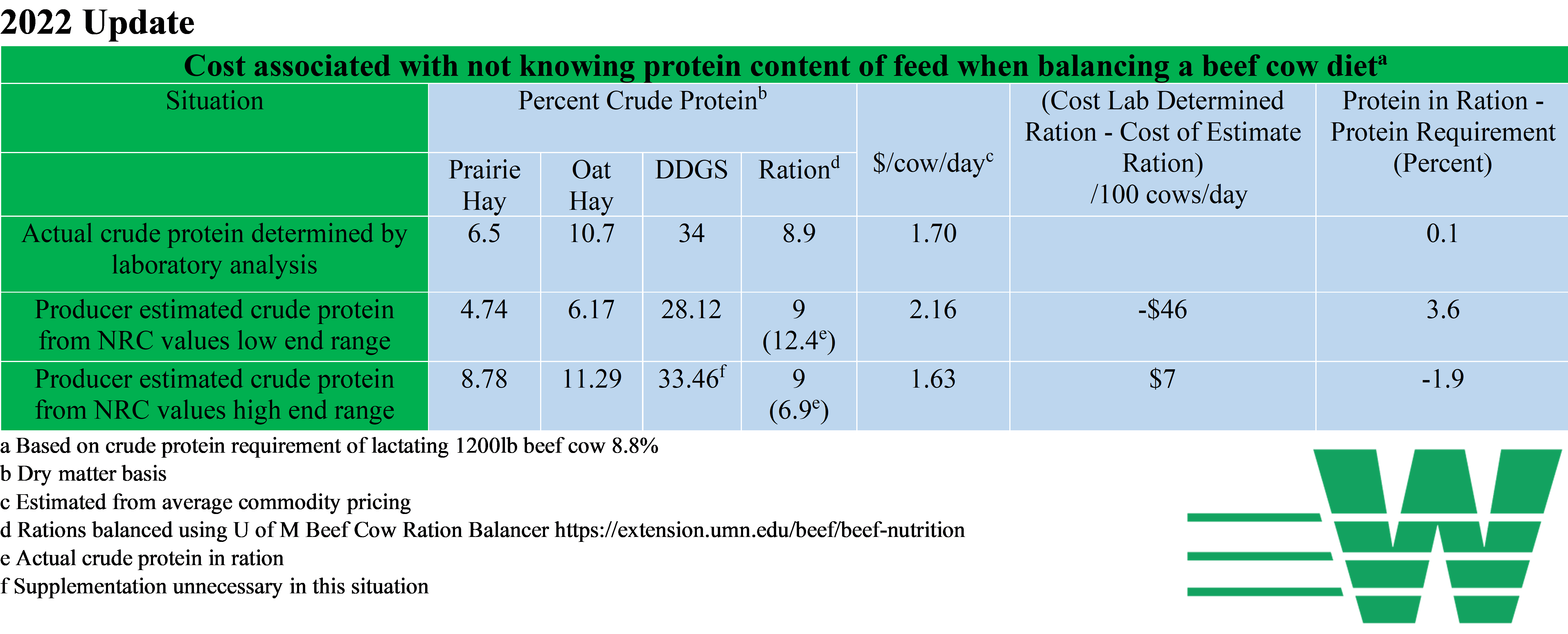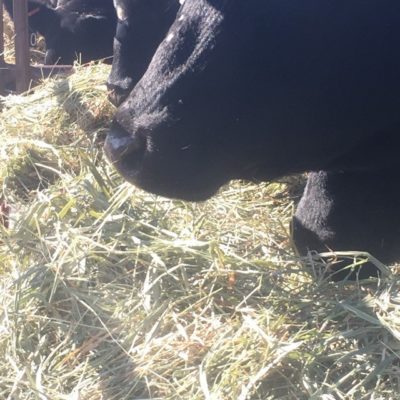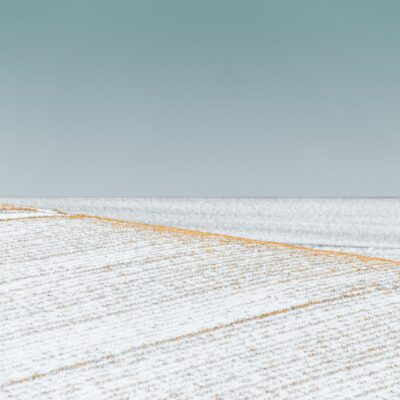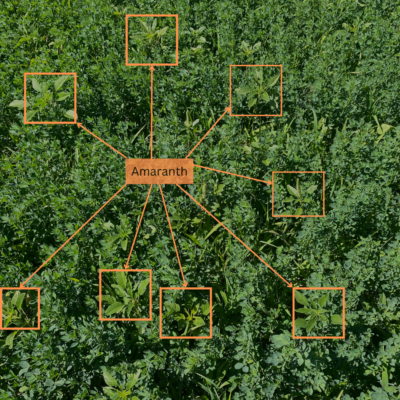The ultimate question of why Ward Laboratories, INC. has a feed department: Why test feeds? Approximately 2 years ago, in 2020 I tried to answer this question in blog post: Value in feed testing: feed analysis pays off in profits. Here we are 2 years later with drought conditions persisting across western United States. These conditions are pushing up forage costs. Furthermore, due to shutdowns during the Corona Virus Pandemic, distillers by-products are not a affordable as they once were. On top of it all, commodity prices such as corn, soybeans and others are also high. And I haven’t even mentioned fertilizer to producer feeds and forages yet…
So, with all of these additional costs, why would a producer spend even more money analyzing feed? Well, we decided to revisit the same example examined in our previous blog post two years ago. We found that in times of high feed costs, feed testing pays off over four times faster!
A look at the numbers
Previously, we made the assumption that it would cost $49 to get a basic analysis of 2 hay samples and 1 protein supplement (DDGS). The table below, shows what the cost to feed a 1200lb lactating beef cow. The diet was made up of two forages and dry distillers grain as the protein supplement. There are three scenarios:
- Balancing with values from feed analysis from Ward Laboratories, INC.
- Determining supplementation using high book values without testing
- Using low book values without testing
As you can see, underestimating crude protein values can results in feed costs exceeding necessity of $46 per 100 cows per day. That is $1380 spent in overfeeding in just one month! Therefore, the analyses costing $49 would have paid for itself in just over 1 day! Looking back at 2020, the cost of overfeeding was only $10 per 100 cows per day. It took closer to 1 week of feeding 100 head for feed testing to pay off. (which we still believe is a great value!)

Additionally, some producers may try to cut back on feed and hope they have the higher end protein in their feeds. Even this strategy to save money is less effective when feed prices go up. In 2020, the savings was $17 per 100 cows per day, now the saving is just $7 per 100 cows per day. Combined with the cost of poor performance due to shorting those animals on protein, feeding less and balancing with an optimistic view of the protein in each feedstuff would not be a wise financial decision. Furthermore, when forage supply is short, low quality forages are typically what we are unfortunately feeding.
Unique Feedstuffs
When times are tough and feed costs are high, we need to get creative. We need to analyze novel feeds we are using to stretch through this difficult situation. Kudos to those who are getting creative! We love seeing more feeding from the waste stream, however we must do so with purpose.
Always keep animal health and performance in mind. Some unlikely feeds we have seen pass through our lab include, marshmallows, potato waste, Cheetos waste, puffed rice cereal waste, macaroni noodles, wheat flour waste, and I am sure there are more feeds I am not thinking of! When utilizing novel feeds it is imperative to analyze for protein, fibers, and minerals. We need to ensure we meet protien and energy requirements. Furthermore, minerals may be lacking in some by-products or overabundant in others. A feed analysis will help producers and nutritionist’s to incorporate these feeds in to the diet in a way that best compliments the other feedstuffs being utilized.
For example, the cereals and macaroni noodles are high in carbohydrates and therefore energy, but not protein. Additionally, these feeds are lacking in mineral content. So, it will be key to ensure mineral requirements are met when these feeds are incorporated into the diet.
Other feed characteristics should be considered as well. For example, when incorporating wheat flour into swine diets: is this going to affect the average particle size? Will this feed end up being detrimental through the development of ulcers? In that case, I would recommend a particle size analysis on the mixed diet. Along the same lines, if providing wheat flour in the diet to beef cattle, with the small particle size: will bloat or acidosis be a concern when those rumen microbes start fermenting the flour? Feed testing and working with a nutritionist can help producers to best utilize novel feedstuffs in their livestock’s diet.
So, Why Test Feeds?
Ultimately, in common feedstuffs, testing feeds will always pay off. Furthermore, it will enormously impact the bottom line when the price of commodities is high. Think about our example. Saving over $1000 in just one month could be the difference for producers teetering on the breakeven range. Moreover, understanding novel feedstuffs and incorporating them into the diet in a way that accounts for animal health and performance is key. This will ensure success when taking advantages of opportunities to purchase “cheap” feeds.




